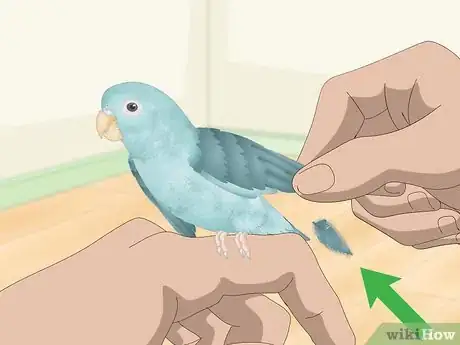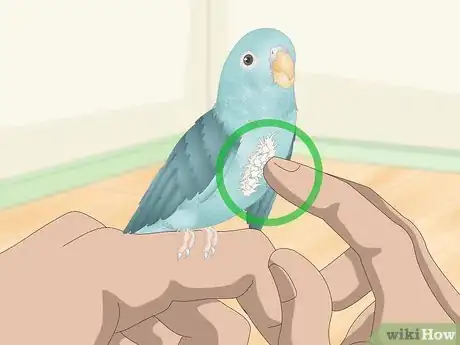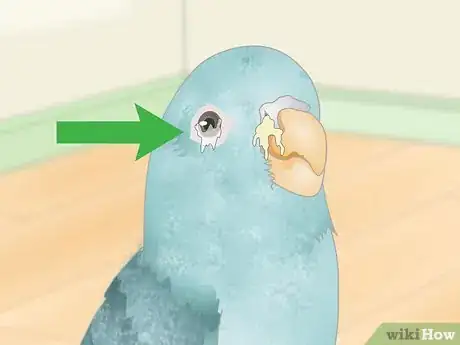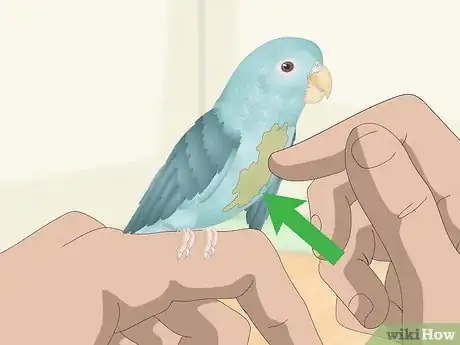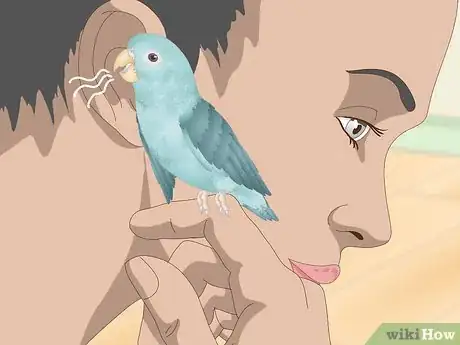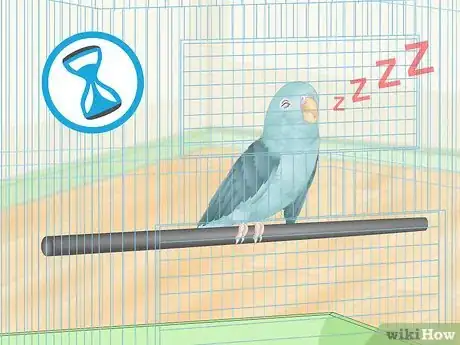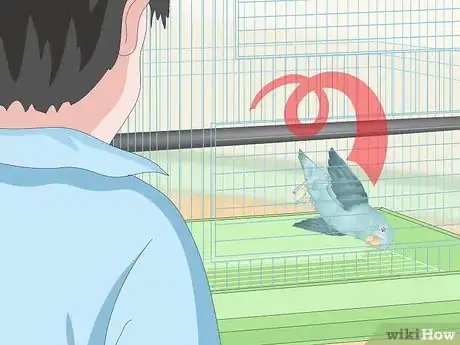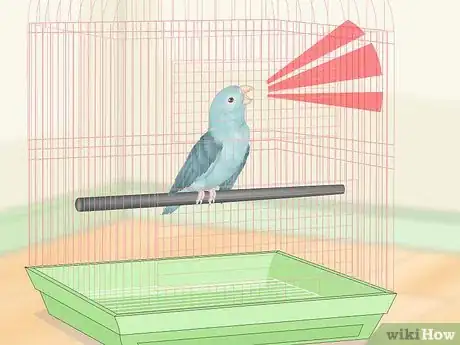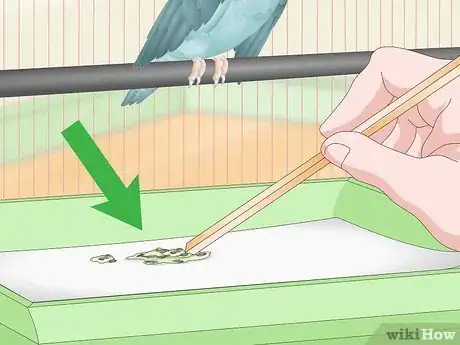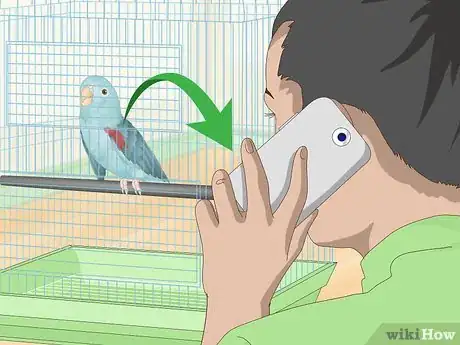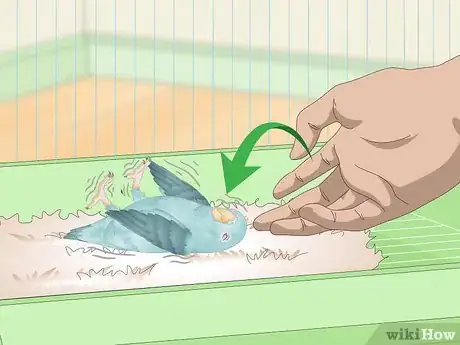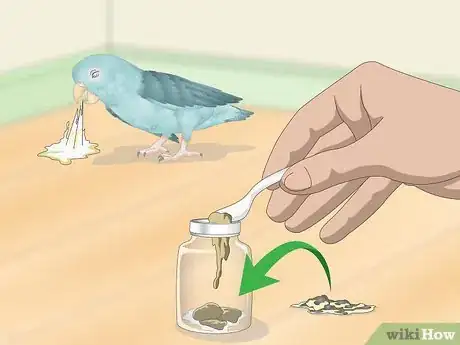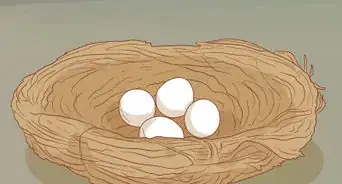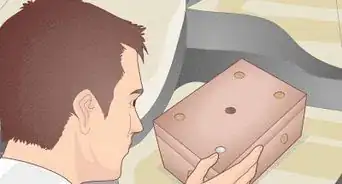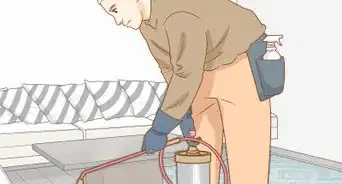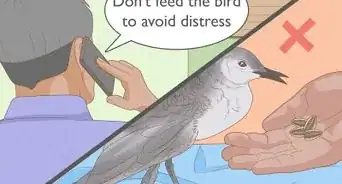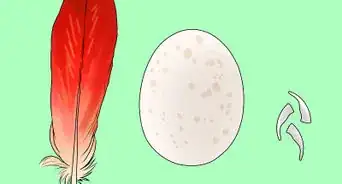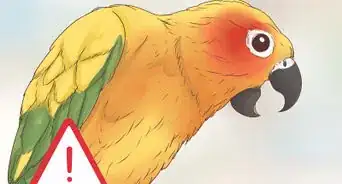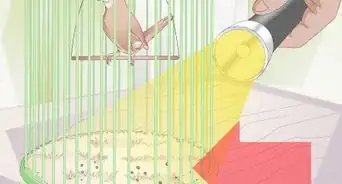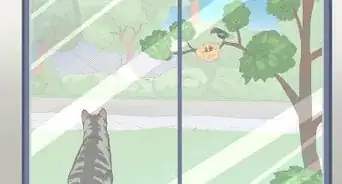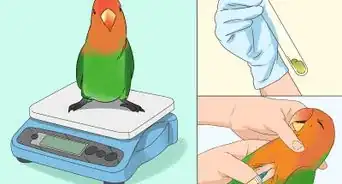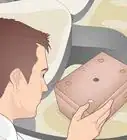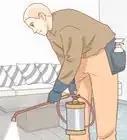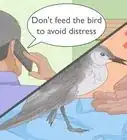This article was co-authored by Ryan Corrigan, LVT, VTS-EVN. Ryan Corrigan is a Licensed Veterinary Technician in California. She received her Bachelor of Science in Veterinary Technology from Purdue University in 2010. She is also a Member of the Academy of Equine Veterinary Nursing Technicians since 2011.
There are 17 references cited in this article, which can be found at the bottom of the page.
This article has been viewed 26,132 times.
A pet parrotlet can live up to twenty-five years, but even a healthy bird can feel under the weather every now and then. Since parrotlets may not show many signs of illness, it is good to be aware of the subtle symptoms a bird may show. Ruffled feathers, discharge, swelling, lethargy, and unusual noises can all be signs of sickness. If your parrotlet has any sign of blood, vomiting, or seizures, however, you may need to seek emergency care.
Steps
Identifying Symptoms
-
1Check the quality of the feathers. Ruffled, thin, patchy, or dull feathers can be a sign that there is something wrong. A disease or parasite may cause the feathers to fall out or the bird may be plucking them from stress.[1]
- If they live alone and pluck their feathers, they may be lonely, not sick! You should still take your parrotlet to the vet, but consider getting them a companion.
-
2Examine their skin for swelling or lesions. Check your parrotlet's skin for any sign of scabs, crusts, rashes, or flaking skin. You may need to brush aside their feathers to see. Swelling around their eyes, feet, vent, and beak can also be a sign of trouble.[2]
- Squinting may mean that their eyes are sore or swollen. This may be caused by many diseases, including parrot fever. Parrot fever is very serious and can be passed to humans. See a vet immediately.[3] To prevent getting it yourself, wear gloves and a face mask when cleaning the cage.[4]
- If it looks as if the area around their eyes is crinkled, they may be suffering from dehydration.[5]
Advertisement -
3Look for any discharge. Discharge around the nares (the nostrils on the beak), eyes, or mouth can be a sign of many different conditions. This discharge may be a clear film or have a distinct coloration, such as white or yellow.[6]
- Watery clear discharge from the nares may be normal, but watery eyes are not.[7]
-
4Find any matted feathers on the chest or vent. Stained, wet, or matted feathers may mean that the parrotlet is either vomiting or has diarrhea. These stains often appear on the chest of the bird or on the vent under the bird.[8]
-
5Listen for fast or labored breathing. If your parrotlet sounds as if they are wheezing or if they are breathing very quickly, they may have a respiratory problem. This could be a simple cold or something more serious.[9]
- If the parrotlet is breathing quickly and holding their wings out from their body, they may be overheated. Cool down the room, and give them some fresh water.
Noticing Changes in Behavior
-
1Watch for excessive sleeping or laziness. A sick parrotlet will often become lethargic. They may be taking long naps during the day. If they are awake, they may be resting on their perch or on the bottom of their cage instead of playing or flying.[10]
- A normal parrotlet is alert and interacts with its surroundings. If your parrotlet seems lethargic, un-alert, and doesn't interact with other birds, it may be sick.
- A sick or lethargic parrotlet may appear hunched, trembling, or puffed up.[11]
- Puffed up feathers are normal while the parrotlet is asleep, but if they're puffing up while they are awake, they may be feeling ill.
-
2Measure how much they are eating. Any change in eating or drinking habits can signal a problem. Check their cage for any uncracked seed or uneaten pellets. These might mean that the parrotlet is not eating. Frequently empty water or food bowls may be a sign that they are eating more than usual.[12]
- Drinking more water than usual can be a sign of dehydration.
- Eating more than normal may indicate that they are struggling to digest their food. This could be caused by avian gastric yeast or macaw wasting disease.[13]
- If your parrotlet abruptly stops eating or drinking, this is a serious sign that something is wrong and that the bird could be very ill.
-
3Observe any stumbling. If your normally graceful parrotlet is stumbling or jerking, it may mean that they are disoriented. They may fall off perches or walk around in circles. These symptoms may signal a neurological condition.[14]
-
4Take note of any unusual screaming or silence. Some squawking is normal for parrotlets, but if they are screaming more than usual, they may be trying to tell you something. Similarly, if the parrotlet is extremely quiet, they may not be feeling well.[15]
- Changes in parrotlet vocalization may be very hard to pick up. Still, if you notice changes, keep a close eye on the bird for other signs.
-
5Examine their droppings. Your parrotlet's droppings can tell you how they're feeling. Normal droppings should have dark brown feces with white tips. Any yellow, green, red, or black discoloration should be checked out by a vet.[16]
- Red and black feces are a sign of internal bleeding. Call your vet immediately.
- If there is undigested food in their droppings, they may have internal parasites.
- If their droppings are green, it may be a sign that they are not eating.
- Changes in the frequency or amount of droppings can also be a sign of sickness.
Handling Emergency Situations
-
1Take your bird to an avian vet. For birds like parrotlets, many diseases and conditions share the same symptoms. An avian vet will be able to diagnose your parrotlet's exact condition by doing X-rays, bloodwork, fecal tests, crop washes, and other tests.
- Try to find a vet that has experience working with birds. Experienced vets will be more familiar with the diseases and problems that affect birds, and can save you time, money, and stress.
-
2Call your vet if you find blood. If you find any sign of blood in the feathers, beak, vent, or droppings, call your vet immediately. These may be caused by an injury, parasites, or a serious disease.[17]
- Call the vet ahead of time in an emergency if you can, and let them know you are coming in. Ask what you should do to help the bird in the meanwhile, too, while driving to the clinic.
-
3Put the parrotlet in an empty cage if they have a seizure. A seizure is marked by a short period of disorientation and stumbling followed by about twenty seconds of shaking. Call your vet immediately if you observe it. In the meantime, place the bird in an empty cage with soft bedding in it to prevent injury.[18]
-
4Take fecal samples if they are vomiting or regurgitating food. Vomiting can be dangerous for parrotlets. Your vet may need to test their feces to see if they have a digestive problem. Scrape some of their droppings into a plastic bag, and take them with you to the vet so that the vet can test them.[19]
- Wear gloves and a surgical mask when taking these samples to avoid picking up an infection yourself. Always wash your hands after handling bird feces.[20]
- Label the bag with your name, the bird's name, and the date you collected the sample. This will help your vet process the sample.
- Some possible conditions that may be causing it include candidiasis or avian gastric yeast.
References
- ↑ http://www.aquaticcommunity.com/parrotlets/
- ↑ http://www.peteducation.com/article.cfm?c=15+1829&aid=2606
- ↑ https://www.omlet.co.uk/guide/parrots/parrots_and_disease/parrot_diseases
- ↑ http://www.cfsph.iastate.edu/FastFacts/pdfs/psittacosis_F.pdf
- ↑ https://www.beautyofbirds.com/sickbirdcare.html
- ↑ http://www.peteducation.com/article.cfm?c=15+1829&aid=2606
- ↑ https://www.vetary.com/bird/condition/sneezing-and-nasal-discharge
- ↑ http://www.peteducation.com/article.cfm?c=15+1829&aid=2606
- ↑ https://www.omlet.co.uk/guide/parrots/parrots_and_disease/health/
- ↑ http://www.aquaticcommunity.com/parrotlets/
- ↑ http://www.peteducation.com/article.cfm?c=15+1829&aid=2606
- ↑ http://www.peteducation.com/article.cfm?c=15+1829&aid=2606
- ↑ https://www.omlet.co.uk/guide/parrots/parrots_and_disease/parrot_diseases
- ↑ https://www.beautyofbirds.com/identifysickbirds.html
- ↑ http://www.aquaticcommunity.com/parrotlets/
- ↑ https://www.omlet.co.uk/guide/parrots/parrots_and_disease/health/
- ↑ http://www.drexotic.com/common-avian-emergencies/
- ↑ https://vcahospitals.com/know-your-pet/seizures-in-birds
- ↑ http://www.merckvetmanual.com/exotic-and-laboratory-animals/pet-birds/mycotic-diseases-of-pet-birds
- ↑ http://www.cfsph.iastate.edu/FastFacts/pdfs/psittacosis_F.pdf
About This Article
To tell if your parrotlet is sick, keep an eye out for discolored droppings that are red, green, yellow, or black, which is a common sign that something is wrong. Check the feathers on your bird's chest and vent too, since they'll often be stained, wet, or matted if your bird is suffering from diarrhea or vomiting. While you're examining your parrotlet's feathers, see if any of them look thin, patchy, or dull, which could be a sign that it's sick. You should also look for any discharge around its eyes, mouth, or beak, since clear, yellow, or white discharge is a common symptom of several different illnesses. If you're worried that your parrotlet is sick, take it to see the vet so they can help you figure out what's going on. For advice from our Veterinary co-author, like how to measure how much your parrotlet is eating, keep reading.
